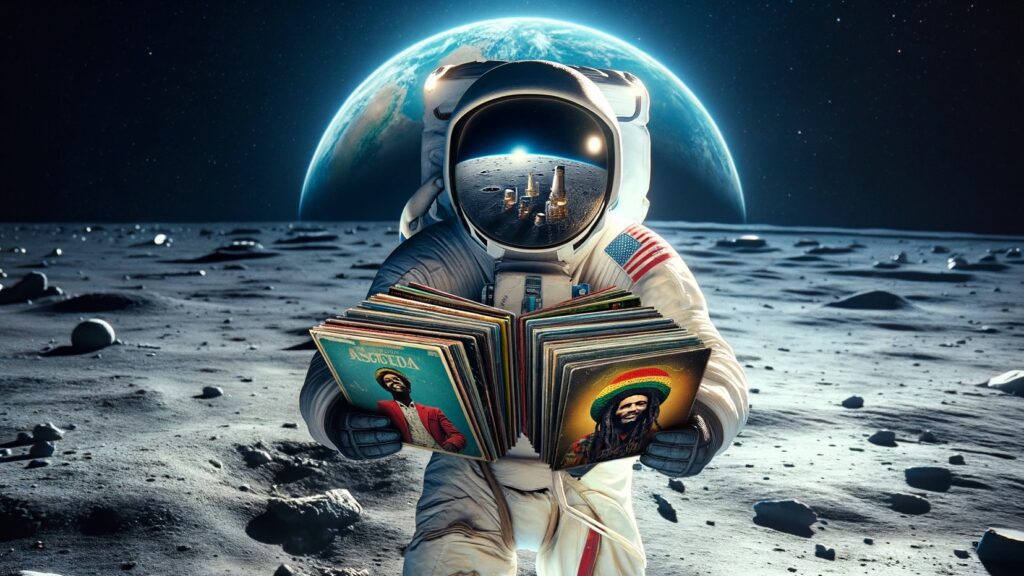Music from Jimi Hendrix, Elvis Presley, Bob Marley, Janis Joplin and more has been placed on the surface of the moon in an “art-focused time capsule” by the Odysseus lunar lander.
Launched by SpaceX, Odysseus It arrived on the lunar surface along with the time capsule on Thursday, February 22. The time capsule, which consists of a digitized archive of music, photographs, artwork and more, supposedly offers a rough overview of the breadth of human culture, from fragments of ancient Sumerian musical notation to paintings by Rembrandt and Van Gogh , Timbaland beats and more. .
Housed in a glass, nickel, and NanoFiche structure, the time capsule was designed to last millions of years, if not longer. Thematically, the curators focused on works from 1969, commemorating the landing of Apollo 11 and the Woodstock festival that occurred weeks later. Others among the 222 artists featured include Marvin Gaye, Santana, Chuck Berry, Sly & the Family Stone, The Who and more, as well as photographs from Woodstock and album covers, including Pink Floyd. dark side of the moon.
The time capsule idea was proposed by Dallas Santana, whose company Space Blue curated the project, working alongside Beverly Hills Productions and the Melody Trust, the latter owner of thousands of masterpieces by classic artists. As a result, the time capsule includes never-before-released songs, such as Hendrix's earliest recordings before the formation of the Jimi Hendrix Experience.
Last week's landing marks the first time a U.S. spacecraft has landed on the Moon since 1972, and the first time a private entity has done so. During its descent to the moon, the 14-foot-tall craft reportedly arrived too fast, causing it to tip over on its side, limiting the functionality of its antennas. Now, entering a two-week lunar night, its batteries will lose power and it will die, as designed.
According to Space Blue's Santana, some musicians were “concerned” about Elon Musk's involvement in the project, leading the group to opt to curate the archive independently.
“When we decided to have conversations about musicians last year, we thought it wasn't appropriate to bring it to [Musk’s] Pay attention to what we were going to do,” Santana said. “The musicians were worried about that. They said, 'Does Elon Musk have anything to do with the decision of which musicians go there?' And I said, 'Of course not, this is a private payload.'”
For more information, read the full report on the time capsule of Billboard.
thanks to our partners at consequence.net
